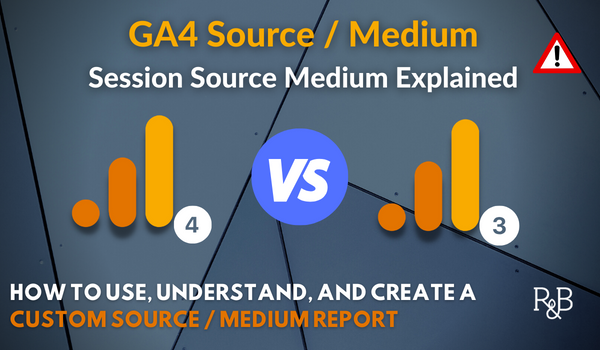Using the Power of Secondary Dimension in Google Analytics to Improve Your Advertising Technique and Drive Outcomes
Leveraging the power of additional measurements within Google Analytics opens a realm of possibilities for marketing experts looking for to obtain much deeper understandings right into individual habits and tailor their campaigns with accuracy. The potential to measure project effectiveness with a granular lens additionally stresses the value of utilizing this tool to drive success.
Understanding Additional Dimensions
When assessing data in Google Analytics, comprehending secondary dimensions is vital for gaining deeper insights into customer habits and internet site performance. Main measurements provide standard information such as the variety of sessions or individuals, but additional dimensions supply an even more thorough sight by permitting customers to section and evaluate data additionally. By including a secondary measurement, online marketers can refine their evaluation and reveal valuable patterns that may have or else gone unnoticed.
Secondary dimensions in Google Analytics can be related to different metrics such as traffic resources, user demographics, and actions circulation. As an example, by integrating the key dimension of 'touchdown web pages' with the secondary measurement of 'device category,' marketers can identify which devices are driving traffic to certain touchdown web pages. This info can help optimize site layout and web content for better user experience throughout various devices
Studying User Behavior Patterns
To successfully comprehend user behavior patterns, a comprehensive evaluation of information within Google Analytics is necessary. By diving right into individual habits patterns, marketing experts can acquire valuable understandings right into exactly how visitors engage with their web site, which web pages are most appealing, and where possible traffic jams or drop-off points might exist in the conversion funnel. Google Analytics supplies a series of tools to analyze user actions, such as habits flow records, event monitoring, and goal funnels.
Habits circulation records provide a graph of exactly how individuals navigate through the site, showing the most typical courses users take along with where they hand over. Event tracking allows online marketers to monitor specific interactions on the website, such as button clicks or video views, offering a deeper understanding of individual engagement. Goal funnels track the actions customers take towards completing a specific objective, highlighting areas for improvement in the conversion procedure.
Enhancing Target Market Division
Upon evaluating user habits patterns, marketing experts can additionally enhance their techniques by boosting target market segmentation techniques in Google Analytics. Audience segmentation enables the classification of website site visitors into specific teams based on different attributes such as demographics, actions, and interests. By making use of Google Analytics' second measurements, marketers can improve these sectors even better to acquire deeper understandings into their target market's choices and activities.
Enhancing target market division allows marketing experts to develop more targeted and individualized advertising and marketing projects. By identifying unique user groups, marketers can tailor their messaging, web content, and offers to much better resonate with each section's distinct characteristics and needs. This level of customization can significantly improve interaction, conversion rates, and overall advertising performance.
Furthermore, through enhanced audience segmentation, marketers can much better comprehend the consumer journey and enhance touchpoints along the course to conversion. By evaluating just how like it various segments connect with the website and advertising networks, marketers can determine possibilities to enhance individual experience, address pain factors, and eventually drive even more conversions. In general, refining target market segmentation in Google Analytics is a powerful technique for optimizing advertising and marketing performance and driving sustainable business growth.
Tailoring Advertising And Marketing Campaigns
Online marketers can maximize their marketing projects by customizing web content and messaging to fit the distinct attributes and demands of details audience sections. By leveraging insights from secondary dimensions in Google Analytics, marketing experts can acquire a much deeper understanding of their audience's habits, choices, and demographics.
Through the analysis of second dimensions such as traffic resources, devices used, or geographic area, marketers can adjust their messaging to be much more impactful and relevant. By customizing advertising and marketing campaigns based on insights from secondary measurements, businesses can maximize the effectiveness of their initiatives and eventually drive better ROI.
Gauging Campaign Effectiveness

One critical element of determining campaign efficiency is tracking conversions. By establishing objectives in Google Analytics, services can monitor certain activities taken by individuals as a result of the project, such as making a purchase or authorizing up for a newsletter. Comprehending the conversion rate these details and the conversion course can offer valuable insights into the efficiency of different advertising channels and messages.
Moreover, evaluating metrics such as click-through prices, bounce prices, and session period can help marketing experts assess user interaction and the impact of the campaign on web site traffic. By incorporating primary metrics with secondary measurements in Google Analytics, companies can improve their advertising and marketing strategies, maximize campaign efficiency, and drive far better results.
Verdict
Finally, utilizing the power of secondary measurements in Google Analytics can provide beneficial understandings right into individual actions patterns, boost audience segmentation, dressmaker marketing projects, and action project performance. By utilizing this function successfully, companies can fine-tune their advertising strategies and drive better results. It is important for marketing professionals to leverage the information readily available through secondary dimensions to make enlightened decisions and enhance their projects for optimal influence.
